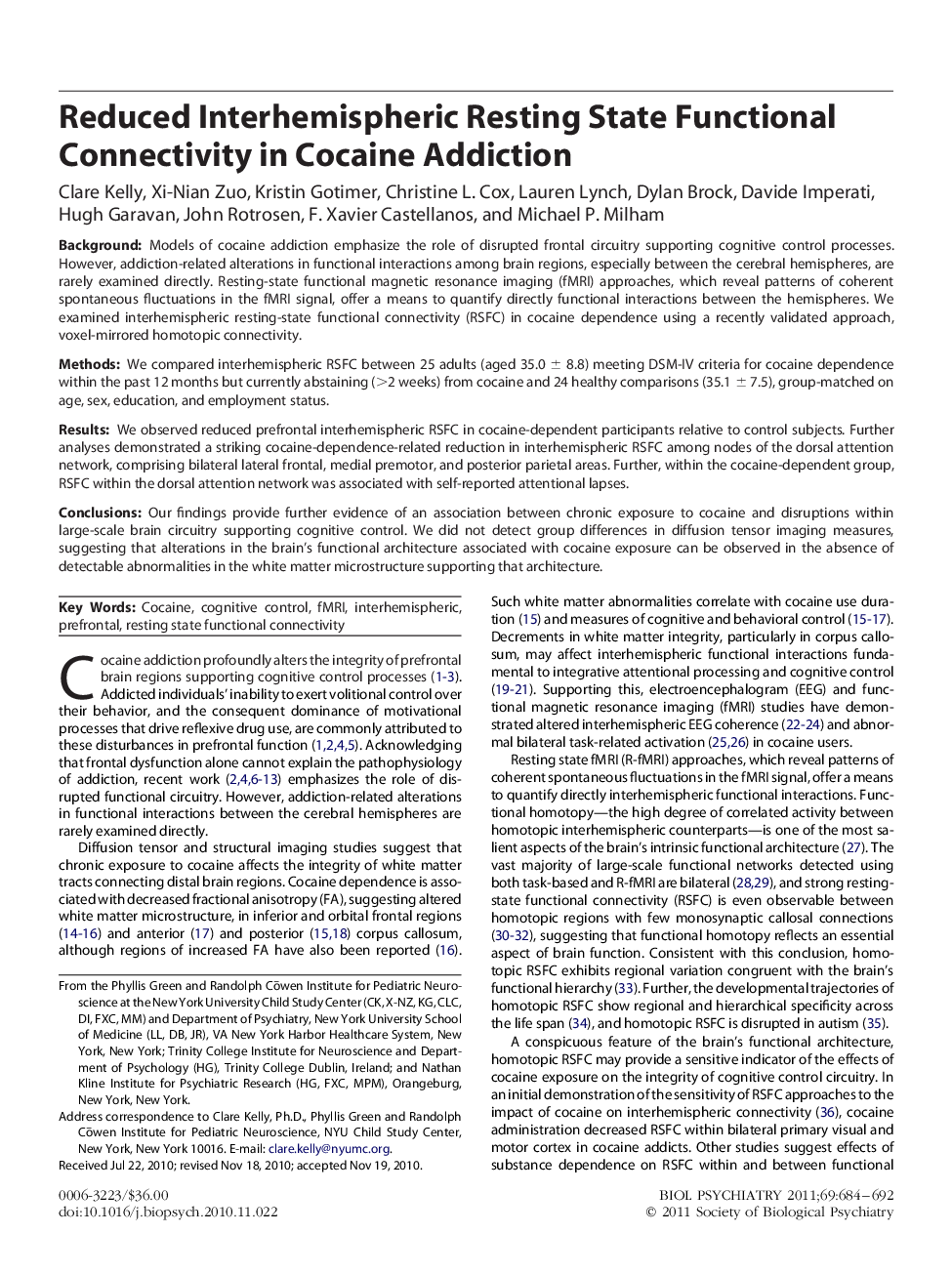| کد مقاله | کد نشریه | سال انتشار | مقاله انگلیسی | نسخه تمام متن |
|---|---|---|---|---|
| 6228248 | 1276519 | 2011 | 9 صفحه PDF | دانلود رایگان |

BackgroundModels of cocaine addiction emphasize the role of disrupted frontal circuitry supporting cognitive control processes. However, addiction-related alterations in functional interactions among brain regions, especially between the cerebral hemispheres, are rarely examined directly. Resting-state functional magnetic resonance imaging (fMRI) approaches, which reveal patterns of coherent spontaneous fluctuations in the fMRI signal, offer a means to quantify directly functional interactions between the hemispheres. We examined interhemispheric resting-state functional connectivity (RSFC) in cocaine dependence using a recently validated approach, voxel-mirrored homotopic connectivity.MethodsWe compared interhemispheric RSFC between 25 adults (aged 35.0 ± 8.8) meeting DSM-IV criteria for cocaine dependence within the past 12 months but currently abstaining (>2 weeks) from cocaine and 24 healthy comparisons (35.1 ± 7.5), group-matched on age, sex, education, and employment status.ResultsWe observed reduced prefrontal interhemispheric RSFC in cocaine-dependent participants relative to control subjects. Further analyses demonstrated a striking cocaine-dependence-related reduction in interhemispheric RSFC among nodes of the dorsal attention network, comprising bilateral lateral frontal, medial premotor, and posterior parietal areas. Further, within the cocaine-dependent group, RSFC within the dorsal attention network was associated with self-reported attentional lapses.ConclusionsOur findings provide further evidence of an association between chronic exposure to cocaine and disruptions within large-scale brain circuitry supporting cognitive control. We did not detect group differences in diffusion tensor imaging measures, suggesting that alterations in the brain's functional architecture associated with cocaine exposure can be observed in the absence of detectable abnormalities in the white matter microstructure supporting that architecture.
Journal: Biological Psychiatry - Volume 69, Issue 7, 1 April 2011, Pages 684-692